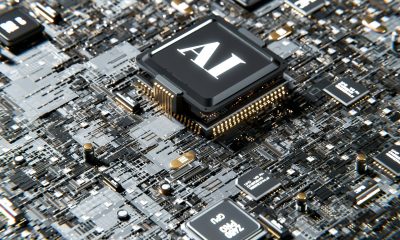Business
What is machine learning and why does it matter?
Unlike many areas of AI research, machine learning isn’t an intangible target. It is a reality, and it’s already working to improve the services we use.

Almost everything in the world is powered by machines. Through the advancement of technology, engineers today can develop machines that can learn on their own. This is called machine learning, a field that seeks to create predictive models and algorithms, giving computers the ability to carry out tasks without being explicitly programmed.
Some applications of machine learning that we all use on a day-to-day basis are Google search engines, recommendations from Amazon, Netflix and YouTube, as well as the suggested friends list on Facebook.
Engineers are now implementing machine learning to a new and rapidly growing field called artificial intelligence (AI), which consists of systems that enable computers to perform intelligent human tasks.
The combination of AI with unsupervised machine learning means the machine needs to identify patterns on its own, whereas supervised machine learning means that the program is trained on a certain amount of input data, like the linear regression model.
Sometimes, machine learning and AI get used interchangeably by big brand companies that want to announce their latest innovations. However, they are two distinct areas of computing that are closely connected.

Through the advancement of technology, engineers today can develop machines that can learn on their own. (Source)
What exactly is machine learning?
The goal of AI is to create a machine that can mimic a human mind. To do that, it needs learning capabilities. However, it’s more than just about learning—it’s also about knowledge representation, reasoning and even abstract thinking. Machine learning, on the other hand, is solely focused on writing software that can learn from past experience.
In fact, machine learning is more closely related to data mining and statistics than it is to AI.
If a computer program can improve how it performs a certain task based on past experience, then one can say it has learned. For example, a computer program can play tic-tac-toe, and you might immediately assume that it will win because a programmer wrote the code with a built-in winning strategy. However, a program that has no predefined strategy and only a set of rules about the legal moves will need to learn by repeatedly playing the game until it is able to win.
This doesn’t only apply to games, it is also true about programs which perform classification and prediction. The process where a machine can identify and designate certain things from a preexisting data set is called classification.
Prediction, also known as a regression in statistics, is where a machine can guess and predict the value of something based on previous values.
Machine learning is the extraction of knowledge from data. You have a question you are trying to answer and you think the answer is in the data. That is why machine learning is related to statistical analysis and data mining.
Unlike many areas of AI research, machine learning isn’t an intangible target. It is a reality, and it’s already working to improve the services we use.

-

 Cannabis3 days ago
Cannabis3 days agoGermany Moves to Tighten Medical Cannabis Rules Amid Surge in Private Use
-

 Business1 week ago
Business1 week agoWhy the iGaming Industry Offers Some of the Best ROI for Affiliate Marketers
-

 Impact Investing9 hours ago
Impact Investing9 hours agoSustainable Finance Faces Hurdles as Green Asset Ratio Reforms Fall Short of Full Transparency
-

 Africa1 week ago
Africa1 week agoBLS Secures 500 Million Dirhams to Drive Morocco’s Next-Gen Logistics Expansion























You must be logged in to post a comment Login